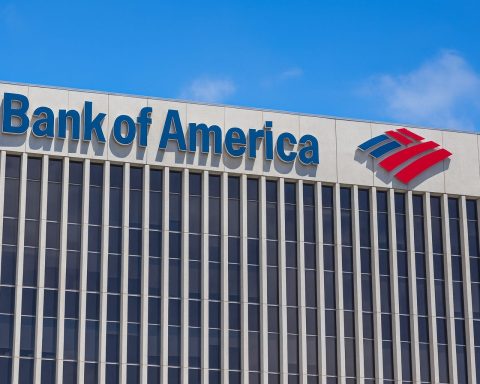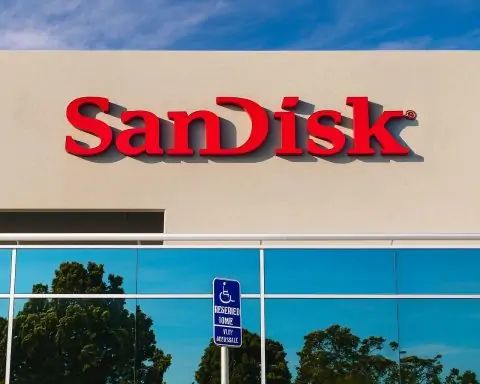London’s stock market endured another bruising session on Friday 21 November 2025, as the FTSE 100 slipped to a one‑month low in early trade before clawing back some ground. A sharp global sell‑off in high‑growth and AI‑linked stocks, disappointing UK data on retail sales and public borrowing, and fresh energy bill worries combined to drag UK shares lower. [1]
By mid‑morning in London, the FTSE 100 was trading around 9,490, down roughly 0.4% on the day, having earlier opened about 1% lower and briefly touched the 9,420 region — its lowest level in around a month. The more domestically focused FTSE 250 and the junior AIM All‑Share were also in the red, down around 0.4–0.6%, as risk appetite faded across UK equities. [2]
FTSE 100 today: early slump, modest stabilisation
London stocks picked up where Wall Street left off. A dramatic reversal in US markets on Thursday — where the S&P 500 swung from nearly a 2% intraday gain to a 1.6% loss after investors reassessed AI valuations and interest‑rate prospects — set a negative tone for European trading. [3]
- At the open: futures had pointed to a decline of around 1%, and the FTSE 100 duly opened close to 9,430, down about 1%. [4]
- One‑month low: the index briefly dropped to around 9,423, marking its lowest intraday level in roughly a month as selling accelerated in early deals. [5]
- Mid‑morning: an improvement in US futures helped London recover some ground, leaving the FTSE 100 down about 0.4% near 9,491 by around 09:15–09:30 GMT. [6]
The FTSE 250 mid‑cap index, heavily populated by UK‑focused companies and investment trusts, also traded around 0.4–0.6% lower near 21,260, while the AIM All‑Share small‑cap benchmark slipped by a similar margin. [7]
Despite Thursday’s modest rebound, which snapped a five‑day losing streak for the FTSE 100, UK equities remain on course for their worst week since April, according to derivatives broker XTB. [8]
Global AI jitters: from Nvidia euphoria to “bubble” worries
The catalyst for Friday’s sell‑off in the London stock market today lies largely overseas.
Nvidia’s blockbuster quarterly earnings on Thursday initially unleashed another wave of enthusiasm for AI‑linked stocks. But that optimism was short‑lived: Nvidia shares reversed sharply, and broader US indices followed, as traders questioned whether AI‑driven capital expenditure and valuations had run too far, too fast. [9]
European commentators described a “three‑alarm fire” in global tech, with futures pointing lower across the continent before the open. [10]
In London:
- Technology and growth proxies such as Polar Capital Technology Trust suffered outsized declines, falling around 4% in early trading. [11]
- Risk‑sensitive sectors including defence, miners and some financials were also hit as investors trimmed exposure to cyclical and higher‑beta names.
The global macro backdrop did not help. A stronger‑than‑expected US jobs report dampened expectations of a December rate cut by the Federal Reserve, prompting JPMorgan to drop its forecast for an imminent easing — a shift that supported bond yields and pressured equities with stretched valuations. [12]
UK macro data: retail slump, borrowing overshoot and higher energy bills
If global AI and rate jitters set the stage, a trio of downbeat UK data releases provided the local script for today’s London market moves.
1. Retail sales fall 1.1% in October
Official figures from the Office for National Statistics showed that UK retail sales volumes fell 1.1% in October, the first monthly drop since May and significantly worse than economists’ expectations for a flat reading. [13]
- September’s figure was revised up to a 0.7% rise, but the October slump still raised eyebrows.
- The ONS highlighted feedback from retailers that shoppers held back spending ahead of Black Friday promotions and amid uncertainty about next week’s Budget. [14]
A separate GfK consumer confidence survey showed sentiment deteriorating across all measures in November, suggesting households are bracing for potentially tougher fiscal news. [15]
2. Public borrowing higher than expected
UK public sector net borrowing in October came in at £17.4 billion, compared with a consensus forecast of about £15.1 billion and an Office for Budget Responsibility projection of £14.4 billion. [16]
- It was the third‑highest October borrowing figure on record in cash terms, and borrowing across the financial year to date has reached around £116.8 billion, up 8.4% year‑on‑year. [17]
- Economists at Capital Economics described the numbers as painting a “pretty grim picture” for Chancellor Rachel Reeves ahead of her Autumn Budget, emphasising limited fiscal room to offer major giveaways. [18]
3. PMI points to near‑stagnation
Fresh “flash” PMI data for November provided more bad news: the UK composite output index fell to 50.5 from 52.2 in October, slipping closer to the 50 mark that separates expansion from contraction and undershooting forecasts. [19]
S&P Global, which compiles the survey, noted:
- Slower growth in services and softer demand as firms and consumers delay decisions ahead of the Budget.
- A marked slowdown in selling price inflation — good for the inflation outlook, but less encouraging for profit margins, investment and hiring. [20]
4. Ofgem nudges energy bills higher
Adding to the pressure on household incomes, regulator Ofgem confirmed that the energy price cap will rise by around 0.2% from January, taking the typical dual‑fuel bill to an estimated £1,758 a year in Q1 2026. [21]
Although the increase is small, it dashed hopes of a more meaningful cut in energy costs and fed fears of a renewed squeeze on disposable income as the key winter period gets under way.
All told, Friday’s data reinforced the narrative of a sluggish, fragile UK economy entering the crucial festive quarter — and that backdrop is weighing heavily on the London stock market today.
Sector and stock movers: defence, miners and retail under pressure
The day’s biggest London stock stories were spread across defence, energy, mining and retail.
Defence and industrials: Babcock and Rolls‑Royce slide
Defence group Babcock International — a FTSE 250 name but an important bellwether for UK defence spending — reported higher first‑half profits and raised its interim dividend, buoyed by strong defence contracts. Yet its shares fell around 3% in early trading as investors took profits after a strong run and digested the outlook commentary. [22]
Blue‑chip engine maker Rolls‑Royce also suffered, sliding roughly 4% and touching its lowest level since August, with traders citing profit‑taking and broader risk‑off sentiment in cyclicals and defence names. [23]
Miners and commodities
Mining heavyweights were another drag on the FTSE 100:
- Anglo American dropped about 3%,
- Glencore fell more than 2%,
as worries over global growth and commodity demand resurfaced alongside the AI‑linked tech sell‑off. [24]
Retail: ASOS and consumer headwinds
Online fashion retailer ASOS found itself at the centre of attention after full‑year results and guidance:
- FY25 sales fell 14.9%, noticeably worse than the company’s own expectation of an 8.7% decline.
- Adjusted EBITDA of £131.6 million came in around 4–5% below analyst estimates. [25]
- For FY26, ASOS guided to adjusted core profit of £150–180 million, with the midpoint below market consensus around £173 million, citing persistently subdued consumer demand. [26]
Shares were down as much as 7% in early trading before trimming losses to around 2–4%, as investors weighed the disappointing guidance against signs that restructuring and cost‑cutting are narrowing losses. [27]
More broadly, retailers exposed to discretionary spending felt the chill from the 1.1% fall in retail sales and the drop in consumer confidence, even as Christmas trading and Black Friday promotions approach. [28]
Bright spots: housebuilders, drinks and gaming
There were a few areas of resilience on the London stock market today:
- Housebuilders such as Persimmon and Barratt traded about 2% higher, as investors bet that weaker economic data and easing inflation could keep the Bank of England on track for further rate cuts next year. [29]
- Premium drinks group Diageo edged higher, up around 39p to 1,743p, as defensive consumer staples attracted bargain hunters. [30]
- Games Workshop extended its remarkable run, rising another 2%‑plus after a 13% surge on Thursday, supported by bullish earnings momentum and ongoing enthusiasm for its fantasy gaming franchises. [31]
FTSE 250 and mid‑caps: investment trusts and Tullow Oil in focus
The FTSE 250 lagged the blue‑chip index in percentage terms for much of 2025, and today’s trading underlined some of the structural challenges faced by UK mid‑caps.
A detailed Reuters analysis of investment trusts, which make up almost a third of the FTSE 250, highlighted how the sector continues to trade at deep discounts to underlying asset values — averaging about 13% below NAV, versus a historical norm closer to 4%. [32]
- Investment trusts’ persistent discount is tied to a lack of domestic investor demand, higher bond yields and a dearth of new London listings — factors that have contributed to $32.4 billion of outflows from UK equities in 2025 so far. [33]
- The article noted that the FTSE 250 has risen only around 4.3% year‑to‑date, versus a much stronger double‑digit gain for the FTSE 100, even as activist investors push for buybacks, mergers and other moves to unlock value. [34]
Among individual FTSE 250 names:
- Tullow Oil shares hit a record low after the company said it is in refinancing talks and expects 2025 production at the lower end of its guidance range, adding to investor worries over its debt load and growth prospects. [35]
- Babcock International, despite stronger earnings and a higher interim payout, traded lower as investors reassessed valuations after a strong year‑to‑date rally. [36]
Crypto and risk sentiment: Bitcoin slide adds to nerves
Risk appetite was further dented by another leg down in cryptocurrencies:
- Bitcoin extended Thursday’s sharp drop, trading 3–4% lower around $83,000–84,000 by early London trade, more than 30% below its early‑October highs. [37]
For some investors, the synchronised weakness in AI‑linked equities, small‑caps and crypto reinforces the impression that froth is being squeezed out of the riskiest corners of the market, at least for now.
What today’s moves mean for UK investors
Even after this week’s pull‑back, the FTSE 100 is still up around 20–21% so far in 2025, helped by its heavy exposure to energy, banks and global exporters. [38] But beneath the headline, today’s London stock market action highlights a few key themes:
- Higher‑for‑longer rates remain a live risk
The shift in expectations for US Federal Reserve policy — and the prospect that the Bank of England may move cautiously on further cuts — is unsettling richly valued sectors and highly leveraged companies. - UK domestic demand looks fragile
The combination of weaker retail sales, higher energy costs and declining consumer confidence underscores the pressure on household budgets. That’s a challenge for UK‑focused retailers, leisure companies and some mid‑caps. - Valuation gaps may tempt long‑term buyers
Deep discounts in investment trusts, lagging FTSE 250 performance, and under‑owned UK equities could appeal to patient investors who believe political and policy changes — including measures in the upcoming Budget aimed at boosting equity investment — will eventually narrow the gap. [39] - AI isn’t going away — but volatility is here to stay
Nvidia’s results show that AI demand remains powerful, yet market positioning and expectations are stretched. London‑listed tech funds and global growth names may continue to see outsized swings as sentiment flips between euphoria and fear.
As always, these moves are not a recommendation to buy or sell any particular security, but they do set the scene for what could be a pivotal week ahead, with Chancellor Reeves’s Autumn Budget and the next set of central‑bank signals likely to shape how the London stock market finishes 2025.
Key numbers at a glance (approximate, mid‑morning 21 November 2025)
- FTSE 100 today: ~9,490, ‑0.4%, after hitting an intraday low near 9,423 (one‑month low). [40]
- FTSE 250 today: ~21,260, down around 0.4–0.6%. [41]
- AIM All‑Share: down about 0.6%. [42]
- UK retail sales (Oct): ‑1.1% m/m, first decline since May. [43]
- Public sector net borrowing (Oct): £17.4bn, above £15.1bn consensus. [44]
- Flash UK PMI composite (Nov): 50.5, signalling near‑stagnation. [45]
- Bitcoin: around $83–84k, roughly 3–4% lower on the day. [46]
References
1. www.theguardian.com, 2. global.morningstar.com, 3. www.theguardian.com, 4. www.inkl.com, 5. www.theguardian.com, 6. www.inkl.com, 7. global.morningstar.com, 8. www.reuters.com, 9. www.theguardian.com, 10. www.nasdaq.com, 11. www.standard.co.uk, 12. www.reuters.com, 13. www.standard.co.uk, 14. www.standard.co.uk, 15. www.standard.co.uk, 16. www.standard.co.uk, 17. www.standard.co.uk, 18. www.standard.co.uk, 19. www.theguardian.com, 20. www.theguardian.com, 21. www.standard.co.uk, 22. www.lse.co.uk, 23. www.standard.co.uk, 24. www.inkl.com, 25. www.marketscreener.com, 26. www.reuters.com, 27. www.proactiveinvestors.co.uk, 28. www.standard.co.uk, 29. www.inkl.com, 30. www.inkl.com, 31. www.standard.co.uk, 32. www.reuters.com, 33. www.reuters.com, 34. www.reuters.com, 35. www.marketscreener.com, 36. www.lse.co.uk, 37. www.standard.co.uk, 38. uk.finance.yahoo.com, 39. www.reuters.com, 40. www.inkl.com, 41. global.morningstar.com, 42. global.morningstar.com, 43. www.standard.co.uk, 44. www.standard.co.uk, 45. www.theguardian.com, 46. www.standard.co.uk







